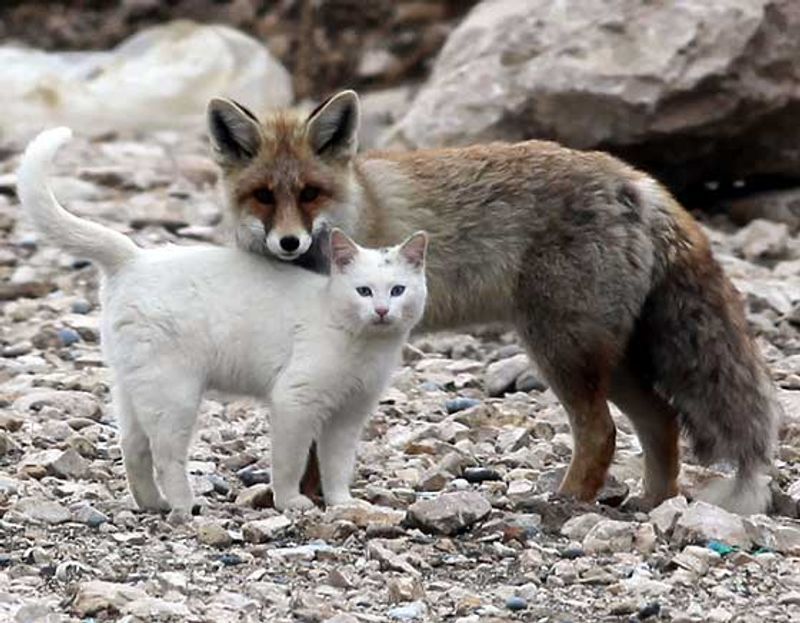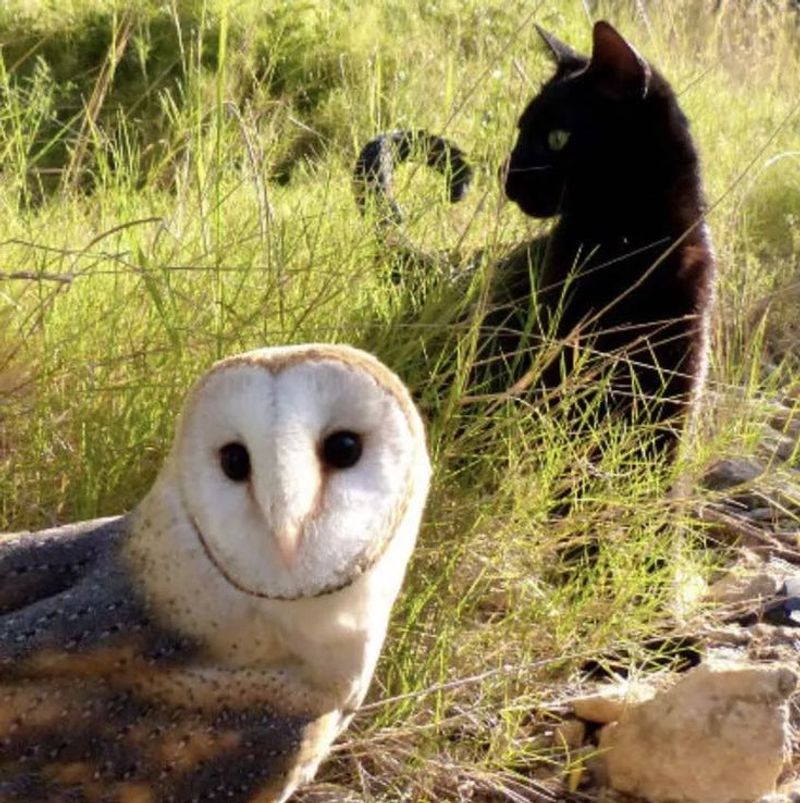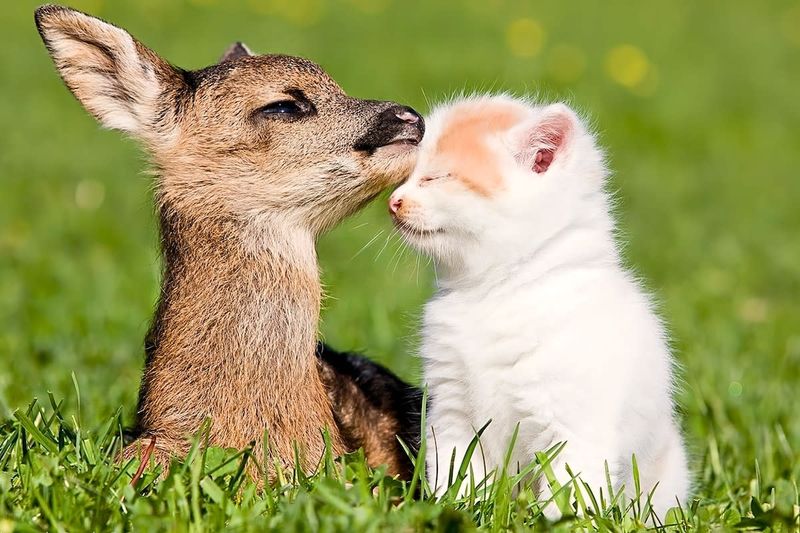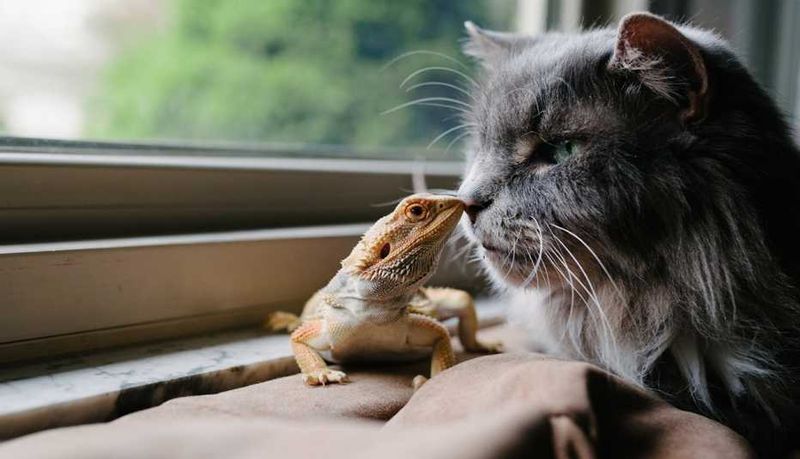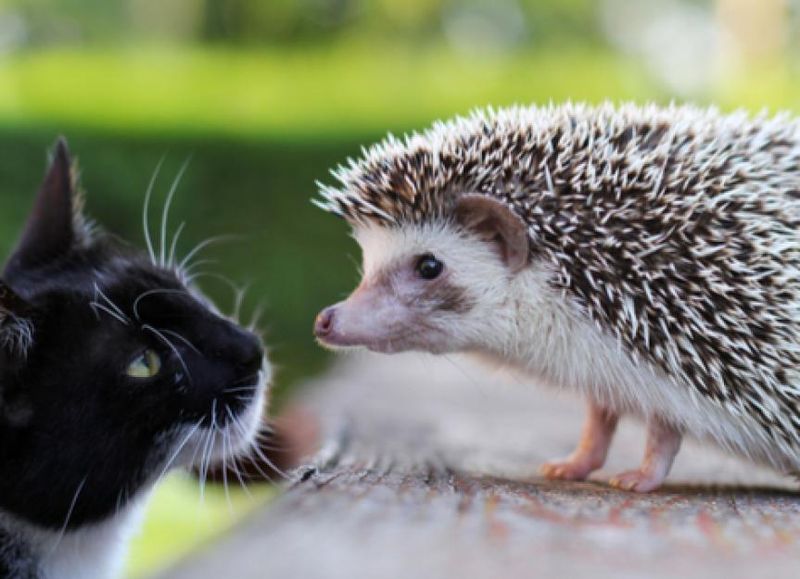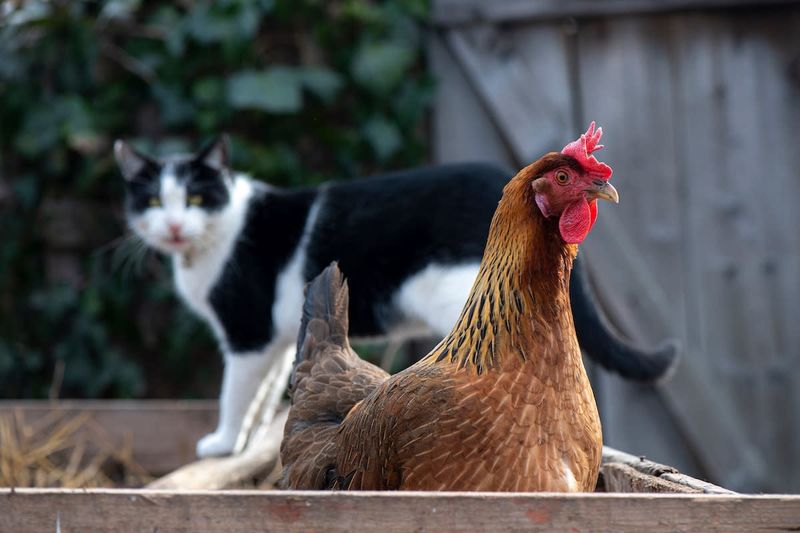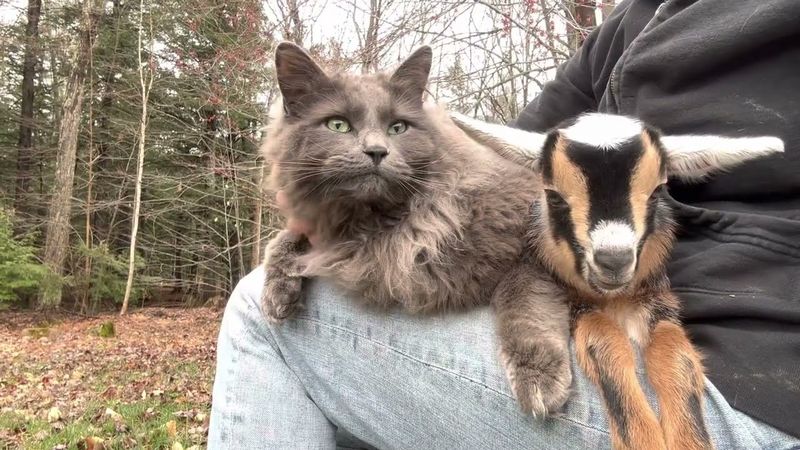📖 Table of Content:
Cats are often seen as solitary and independent animals, preferring their own company over that of others. Despite this reputation, they are capable of forming deep, meaningful connections across species lines. These bonds may seem unlikely, but they reveal another side of feline nature.
Interactions between cats and animals like dogs, birds, or even deer have been documented in both wild and domestic settings. In many cases, these relationships develop through gentle exposure, shared environments, or mutual need. What emerges is a form of companionship that defies common expectations.
Such friendships highlight the adaptability of cats and their ability to trust when conditions feel safe. These moments offer insight into the emotional depth often hidden beneath a cat’s reserved demeanor. With the right environment, cats can prove to be far more socially complex than they appear.
1. Rats
Cats and rats represent one of nature’s classic predator-prey relationships, yet they can develop genuine friendships under the right conditions. Young cats raised alongside pet rats often view them as family rather than food.
The key factor is early socialization. When introduced during a cat’s formative weeks, rats become familiar with scents associated with safety rather than hunting instincts. Their similar size and playful nature create perfect playmates.
Owners report their cats grooming their rat friends and even sharing sleeping spaces. This relationship works best with domesticated rats who themselves are socialized to interact with other species.
2. Foxes
Rural cat owners occasionally witness the unusual sight of their felines forming bonds with wild foxes. These unexpected connections happen most frequently in areas where territories naturally overlap, like farms or woodland edges.
Both species share similar hunting techniques, body language, and play behaviors. Their compatible communication styles allow them to understand each other’s intentions during interactions. Foxes and cats engage in parallel play—hunting separately but in proximity—creating a comfortable association.
Wildlife experts note these relationships form primarily between young foxes and confident adult cats. The shared carnivore heritage creates a mutual recognition that can overcome natural wariness.
3. Owls
The internet has documented several fascinating friendships between cats and owls. These nocturnal hunters share similar activity patterns and hunting interests, creating natural opportunities for interaction.
Behavioral scientists believe these bonds form through mutual curiosity and respect for each other’s hunting abilities. Both species possess exceptional night vision, silent movement techniques, and patience when stalking prey.
Cats and owls communicate through subtle body language rather than vocalizations. Their partnership often begins with distant observation before progressing to closer proximity. These relationships typically develop in rural settings where both animals have space to maintain independence while enjoying occasional companionship.
4. Deer
Few animal friendships are as visually captivating as those between farm cats and wild deer. These bonds often emerge in quiet rural areas where deer return regularly in search of food.
Cats initially approach with caution, drawn by the deer’s gentle movements. The deer’s herbivore status means they pose no competitive threat to the cat’s territory or food sources.
Frequent positive encounters build trust over time. Researchers observe that cats enjoy the warmth of resting near deer, while deer benefit from the cat’s alertness to potential dangers. These bonds strengthen during harsh winter months when both animals seek warmth and companionship.
5. Bearded Dragons
Cats and bearded dragons form unusual but harmonious friendships centered around their shared love of warmth. Both creatures are natural heat-seekers who enjoy basking in sunny spots around the house.
The reptile’s slow, predictable movements don’t trigger the cat’s prey drive. Meanwhile, bearded dragons quickly learn that cats pose no threat, creating a foundation for peaceful coexistence.
Owners report their pets eventually progressing from tolerance to genuine affection. The relationship benefits both animals—cats enjoy the dragon’s body heat while dragons appreciate the cat’s protective presence. This friendship works best with cats raised around reptiles from kittenhood.
6. Crows
In quiet backyards and alleyways, outdoor cats and clever crows sometimes cross paths in peace. Crows, sharp-eyed and smart, can remember the face of a cat. They know when to flee and when friendship is possible.
The friendship typically begins when crows observe cats hunting. They follow at a safe distance, waiting to scavenge leftovers. Over time, some crows bring small gifts—shiny objects, food scraps, or even toys—seemingly to encourage the relationship.
Cats learn that crows pose no threat and may even alert them to other predators in the area. This symbiotic relationship demonstrates both species’ remarkable adaptability and intelligence. These partnerships are most common in suburban areas with stable crow populations.
7. Hedgehogs
With time and patience, pet hedgehogs and cats may develop quiet companionships built on trust. A hedgehog’s spines send a clear message, guiding cats to tread lightly. This careful balance creates a unique kind of friendship.
Cats are drawn to the hedgehog’s small size and unique movement patterns. Their natural hunting instincts transform into curiosity when they realize this strange creature isn’t typical prey.
Successful friendships develop through supervised interactions where both animals learn each other’s boundaries. Owners note their cats often become protective of their spiny companions, treating them as part of their territory to be defended. These relationships work best with confident hedgehogs and younger, adaptable cats.
8. Chickens
At first glance, cats and chickens might seem like unlikely allies. But in many barns, cats act more like sentinels than stalkers, watching over the flock. Over time, these interactions evolve into a quiet partnership rooted in shared space.
The transformation begins when cats realize chickens attract rodents—their preferred prey. Cats hunt mice around chicken coops while leaving the birds untouched. Chickens eventually recognize the cat’s beneficial presence.
Some cats even enjoy the warmth of nesting boxes or sleeping among resting hens. Farmers report their cats following chickens throughout the day, creating what appears to be genuine social bonds. This relationship demonstrates how practical benefits can evolve into social connections across species.
9. Goats
Farm cats and goats bond through their shared love of climbing and jumping. Both species naturally seek high vantage points and enjoy navigating complex environments.
Young goats’ playful head-butting and prancing movements fascinate cats, who respond with their own playful pounces. Their compatible energy levels create natural playmates despite their size difference.
The relationship often begins when curious kittens encounter kid goats in barn settings. Their physical capabilities complement each other—goats provide mobile climbing structures while cats demonstrate agility techniques. These friendships thrive in farm sanctuaries where both animals have freedom to interact on their own terms.


